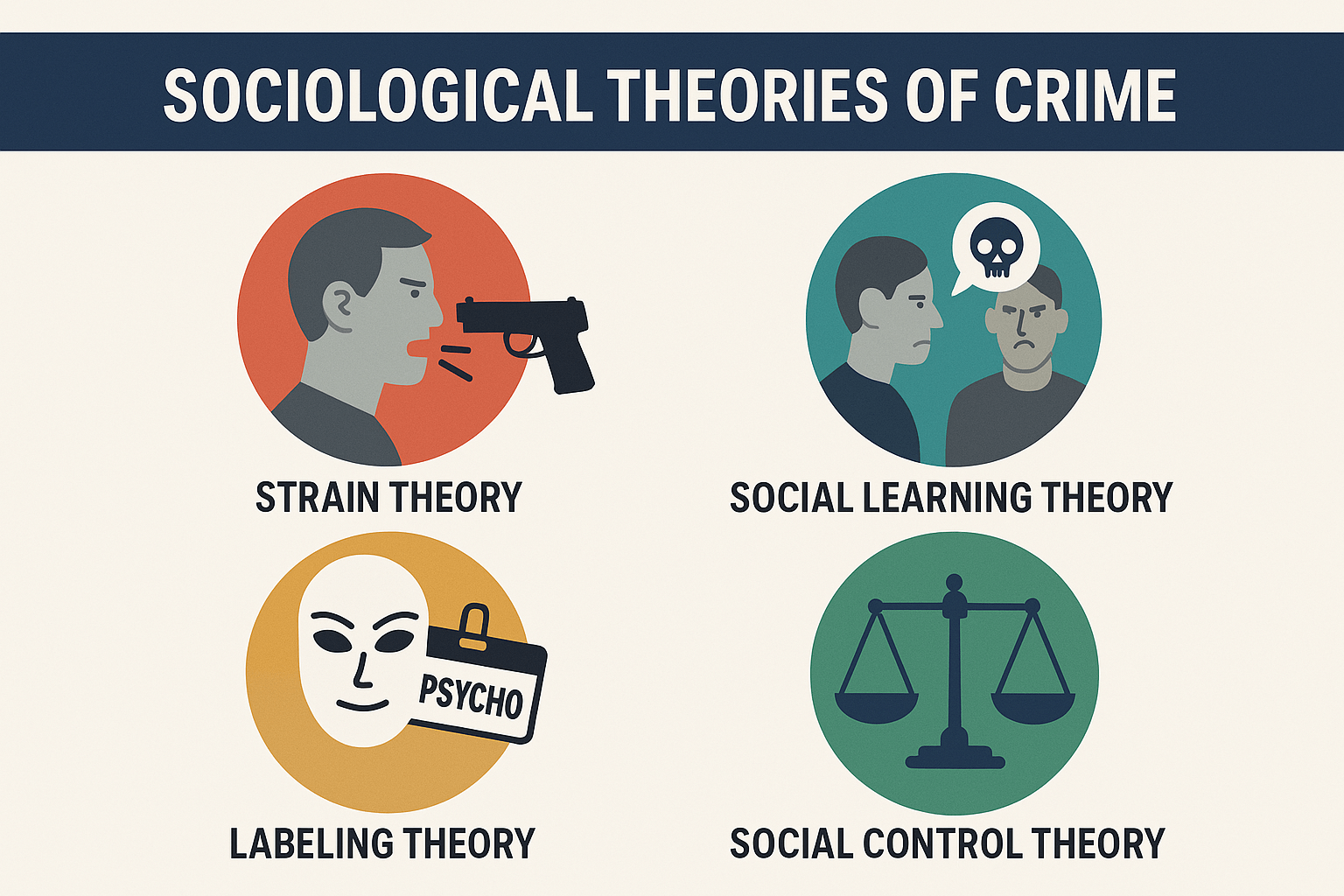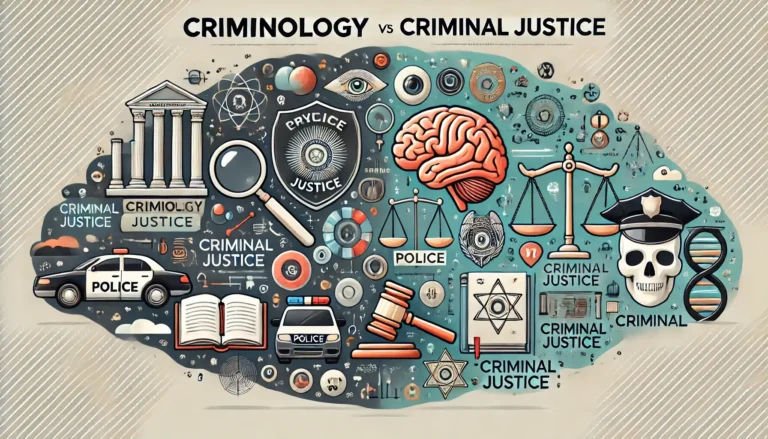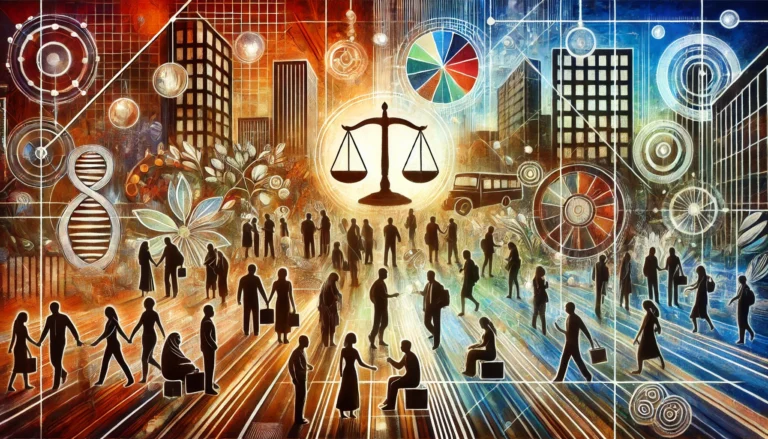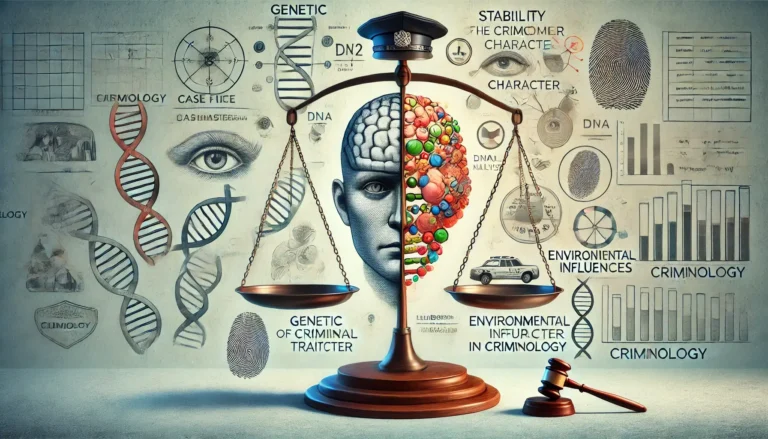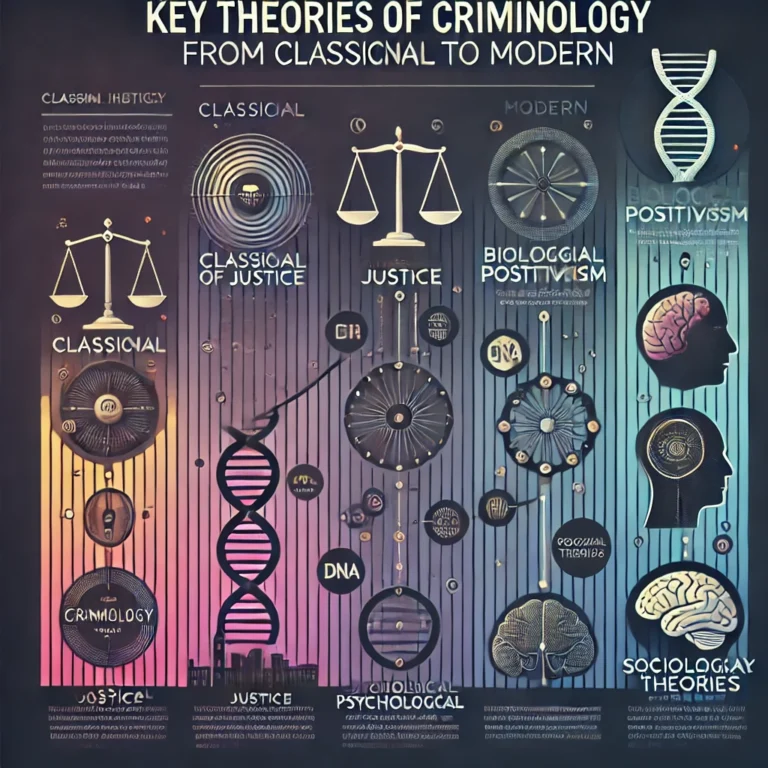Criminology and Sociology: Understanding Crime Through Social Perspectives
1. Introduction
Criminology and sociology are two deeply interconnected fields that explore the nature, causes, and consequences of human behavior within social contexts. While criminology specifically focuses on crime, criminal behavior, and the criminal justice system, sociology provides a broader understanding of human society and social structures. Together, criminology and sociology offer powerful tools for analyzing why crimes occur, how societies define and respond to deviant behavior, and the social conditions that contribute to criminality. This article provides an in-depth exploration of the relationship between criminology and sociology, tracing their historical development, theoretical foundations, and modern applications in understanding crime.
2. Historical Development of Criminology and Sociology
The origins of criminology date back to the Enlightenment era when thinkers like Cesare Beccaria and Jeremy Bentham advocated for rational and humane approaches to crime and punishment. Their work laid the groundwork for classical criminology, which emphasized free will and deterrence.
Sociology, on the other hand, emerged as a formal discipline in the 19th century, with pioneers like Auguste Comte, Karl Marx, Emile Durkheim, and Max Weber exploring how societies function, evolve, and influence individual behavior. As criminology developed, it increasingly drew on sociological concepts to understand crime as a social phenomenon rather than merely an individual moral failing.
By the 20th century, criminology and sociology began to merge, with sociologists contributing major theories of deviance and crime. The Chicago School, for instance, emphasized the role of urban environments in shaping criminal behavior, while Durkheim’s work on anomie highlighted the breakdown of social norms as a cause of deviance.
3. Theoretical Frameworks Linking Criminology and Sociology
Sociology offers several theoretical frameworks that have significantly influenced criminological thought:
- Structural Functionalism views crime as a necessary part of society that reinforces norms and promotes social cohesion. It suggests that deviance can clarify societal values and stimulate positive social change.
- Conflict Theory, rooted in Marxist thought, argues that crime results from social and economic inequalities. It emphasizes the role of power, class struggle, and institutional bias in shaping criminal justice outcomes.
- Symbolic Interactionism focuses on how individuals interpret and respond to social symbols and interactions. It has contributed to theories like labeling theory, which examines how being labeled as a criminal affects one’s identity and behavior.
- Social Constructionism posits that crime and deviance are not inherent behaviors but are defined by societal norms and reactions. What is considered criminal varies across cultures and historical periods.
These frameworks demonstrate the value of integrating criminology and sociology to gain a more nuanced understanding of crime.
4. Sociological Theories of Crime
Numerous sociological theories offer insights into criminal behavior:
- Emile Durkheim’s Anomie Theory suggests that crime occurs when societal norms break down, leading individuals to feel disconnected from the collective conscience.
- Robert Merton’s Strain Theory builds on Durkheim’s ideas, proposing that crime results when people cannot achieve culturally approved goals through legitimate means.
- Subcultural Theories argue that some groups develop norms that are conducive to deviance and criminal behavior, often as adaptations to social exclusion or marginalization.
- Labeling Theory highlights the impact of societal reactions on individuals, where being labeled as a criminal can lead to a self-fulfilling prophecy.
- Social Learning Theory, developed by Albert Bandura and later expanded by Ronald Akers, posits that people learn criminal behavior through interactions and observations within their social environment.
Each of these theories demonstrates how sociological perspectives are essential for explaining the complexities of criminal behavior.

5. Social Institutions and Their Role in Crime
Social institutions—structured systems of social order such as family, education, religion, and the economy—play a pivotal role in shaping behavior and potentially influencing crime rates:
- Family: Dysfunctional family environments, lack of parental supervision, or exposure to domestic violence are linked to increased risks of delinquency.
- Education: Schools serve as sites for both socialization and inequality. School failure or discrimination may contribute to feelings of alienation and deviant behavior.
- Religion: Religious institutions can promote prosocial behavior and provide moral guidance, though religious conflict and exclusion may also foster deviance.
- Media: The portrayal of violence, crime, and deviant lifestyles in media can influence public perceptions and individual behavior, especially among impressionable youth.
- Economy and Labor Markets: Unemployment, poverty, and lack of access to economic opportunities are strongly associated with higher crime rates.
By examining these institutions, criminology and sociology can uncover the structural roots of criminality.
6. Social Class, Race, and Gender in Criminological Sociology
Issues of inequality are central to the sociological study of crime:
- Social Class: Lower socioeconomic status is often correlated with higher rates of criminal behavior, due to limited access to resources and opportunities.
- Race and Ethnicity: Minority groups frequently face disproportionate surveillance, policing, and incarceration, reflecting systemic bias within the justice system.
- Gender: Traditional criminology focused predominantly on male offenders. Feminist criminology highlights how gendered experiences influence patterns of victimization and offending.
Understanding the intersection of class, race, and gender provides a comprehensive view of the social dimensions of crime.
7. Quantitative and Qualitative Methods in Criminology and Sociology
Both criminology and sociology employ diverse research methods to study crime:
- Quantitative Methods: Surveys, official statistics, and longitudinal data allow researchers to identify patterns and correlations across large populations.
- Qualitative Methods: Ethnography, interviews, and participant observation provide deeper insights into the lived experiences of individuals within specific social contexts.
- Mixed Methods: Combining both approaches enhances the richness and validity of criminological research.
These methodologies enable scholars to construct robust, evidence-based understandings of crime and its social underpinnings.

8. The Role of Sociology in Criminal Justice Policy
Sociological research significantly influences criminal justice policies:
- Crime Prevention: Insights from sociology inform community-based programs, youth intervention initiatives, and social support systems aimed at reducing crime.
- Punishment and Rehabilitation: Sociology challenges purely punitive approaches and advocates for rehabilitative models that address underlying social causes.
- Restorative Justice: This approach, rooted in sociological principles, emphasizes healing, reconciliation, and community involvement over retribution.
Integrating sociological perspectives into policy-making promotes more equitable and effective criminal justice outcomes.
9. Contemporary Issues in Criminology and Sociology
Modern society presents new challenges for the intersection of criminology and sociology:
- Urban Crime: Rapid urbanization and socioeconomic disparities contribute to crime in densely populated areas.
- Policing and Systemic Bias: Racial profiling, police violence, and institutional racism are central concerns for sociological criminology.
- Mass Incarceration: The rise of prison populations, particularly in the U.S., reflects broader societal issues of inequality and policy failure.
- Cybercrime: The digital age has introduced new forms of crime, including identity theft, hacking, and online harassment, requiring updated sociological frameworks.
By addressing these issues, criminology and sociology remain vital in navigating the complexities of modern criminal behavior.
10. The Future of Criminology and Sociology
As society evolves, so too must our approaches to understanding crime:
- Technology and Big Data: AI and data analytics offer new tools for crime prediction, prevention, and policy evaluation.
- Interdisciplinary Research: Collaborations between criminologists, sociologists, psychologists, and legal scholars are essential for tackling multifaceted crime issues.
- Globalization: Transnational crime, such as human trafficking and organized crime, demands a global sociological perspective.
The future of criminology and sociology lies in their adaptability and continued integration to address emerging societal challenges.
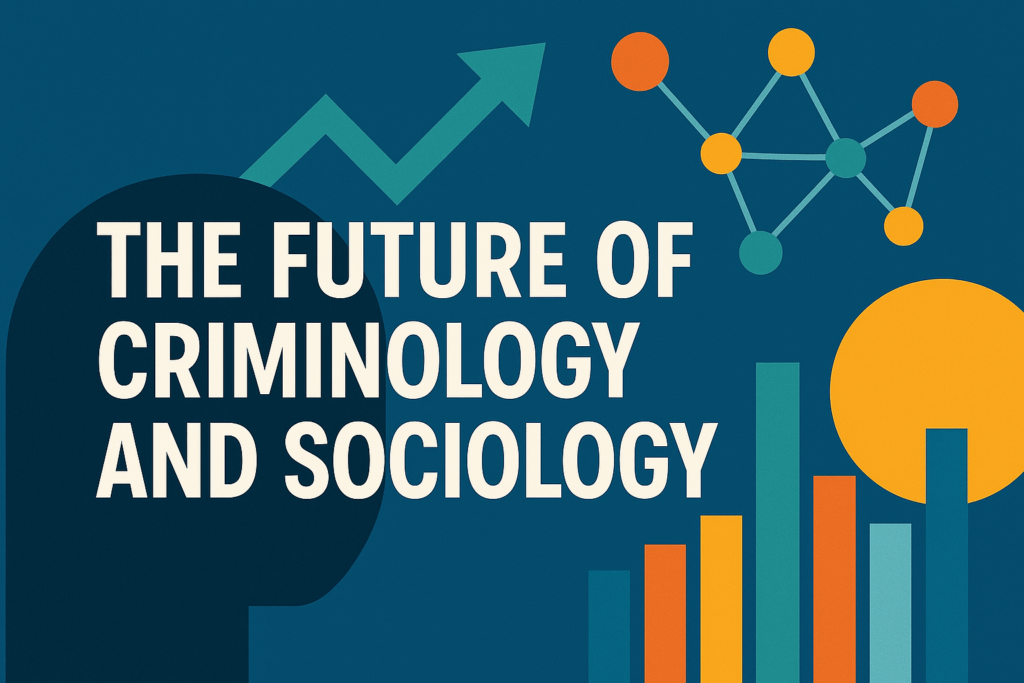
11. Conclusion
Criminology and sociology are deeply intertwined disciplines that provide critical insights into the causes and consequences of criminal behavior. By examining crime through a sociological lens, researchers and practitioners can better understand the complex social forces that shape deviance and justice. From historical foundations to modern applications, the synergy between criminology and sociology enriches our understanding of human behavior and informs more compassionate and effective responses to crime. As the world continues to change, the partnership between these two fields will remain essential in shaping the future of justice and social well-being.
References
Beccaria, C. (1764). On Crimes and Punishments.
This classic work by Cesare Beccaria is foundational to criminology, particularly in the areas of legal reform and the relationship between crime and societal structures.
Durkheim, E. (1893). The Division of Labor in Society.
Durkheim’s exploration of social structures and their impact on individual behavior is crucial for understanding the sociological perspective on crime and deviance.
Merton, R. K. (1938). Social Structure and Anomie.
Merton’s theory of anomie and strain is a key sociological approach to explaining deviance and criminal behavior.
Marx, K. (1867). Capital: A Critique of Political Economy.
Marx’s work on class struggle and inequality is foundational to understanding the role of power and social class in criminology, especially within the framework of conflict theory.
Goffman, E. (1963). Stigma: Notes on the Management of Spoiled Identity.
Goffman’s examination of social stigmas is essential for understanding the labeling theory in criminology, exploring how society’s perception affects criminal behavior.
Becker, H. S. (1963). Outsiders: Studies in the Sociology of Deviance.
Becker’s work on labeling theory provides key insights into how societal reactions contribute to criminal behavior.
Foucault, M. (1975). Discipline and Punish: The Birth of the Prison.
Foucault’s analysis of power and the development of the modern criminal justice system is critical for understanding the intersection of criminology and sociology.
Cohen, A. K. (1955). Delinquent Boys: The Culture of the Gang.
Cohen’s study of subcultural theories provides insight into how social groups and environments contribute to deviant behavior.
Akers, R. L. (1998). Social Learning and Social Structure: A General Theory of Crime and Deviance.
This book elaborates on social learning theory and its application to criminology, offering a sociological perspective on crime as learned behavior.
Chambliss, W. J., & Seidman, D. (1971). Law, Order, and Power.
This text explores the role of law and social order in shaping criminal behavior, with an emphasis on conflict theory and societal power structures.
Sutherland, E. H. (1947). Principles of Criminology.
Sutherland’s differential association theory is an essential work that examines how criminal behavior is learned through social interactions.
Weber, M. (1922). Economy and Society.
Weber’s exploration of the social impact of bureaucracy and authority plays a critical role in understanding the institutional aspects of criminology.
Taylor, I., Walton, P., & Young, J. (1973). The New Criminology: For a Social Theory of Deviance.
This work is important in its challenge to traditional criminological theories and its integration of sociological insights into crime and deviance.
Quinney, R. (1970). The Social Reality of Crime.
Quinney offers a critical perspective on crime, arguing that criminal behavior is defined by the social and economic elites who hold power in society.
Hirschi, T. (1969). Causes of Delinquency.
Hirschi’s social bond theory examines the connection between individual social bonds and delinquent behavior, contributing to criminological thought.

